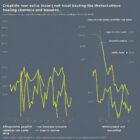Why Have Healthcare Open Enrollment Policies Changed?

Have you ever wondered why healthcare open enrollment policies have undergone significant changes? Well, look no further. In this article, we will delve into the reasons behind this shift.
From growing consumer demand for flexibility to the impact of COVID-19, various factors have contributed to the evolution of these policies. Additionally, changing insurance market dynamics and efforts to improve access and affordability have played a vital role.
So, let’s explore the intriguing world of healthcare open enrollment policies together.
Key Takeaways
- Factors such as the ever-evolving nature of the healthcare industry, changing political landscape, public opinion and advocacy, and new technologies and medical advancements have influenced changes in healthcare open enrollment policies.
- Consumer demand for flexibility in healthcare, driven by changing lifestyles and work patterns, increasing healthcare costs, desire for personalized healthcare, and access to a broader network of providers, has also played a role in shaping open enrollment policies.
- The COVID-19 pandemic has had a significant impact on open enrollment policies, leading to extensions of enrollment periods, special enrollment periods for those affected by the virus, and a heightened focus on healthcare coverage and affordability.
- Changing insurance market dynamics, including the increasing use of technology, shifts in consumer preferences, regulatory reforms, development of innovative products and services, and competition among insurers, have contributed to the evolution of open enrollment policies.
Shifts in Healthcare Regulations
You need to understand the reasons behind shifts in healthcare regulations.
Over the years, healthcare regulations have undergone significant changes due to various factors. One of the main reasons for these shifts is the ever-evolving nature of the healthcare industry itself. As new technologies, treatments, and medical advancements emerge, regulations must adapt to ensure patient safety and quality of care.
Another driving force behind the shifts in healthcare regulations is the changing political landscape. Different administrations bring their own priorities and ideologies, which often result in changes to existing regulations or the introduction of new ones. For example, a government that emphasizes cost containment may implement regulations aimed at reducing healthcare expenses, such as implementing price controls or encouraging the use of generic drugs.
Additionally, public opinion and advocacy play a crucial role in shaping healthcare regulations. As society becomes more aware of healthcare issues and demands better access to affordable and quality care, policymakers are compelled to respond. This can lead to shifts in regulations to address concerns such as healthcare disparities, patient rights, and access to essential services.
Growing Consumer Demand for Flexibility
With the changing healthcare landscape, you are increasingly seeking flexibility in your healthcare options. As consumers, you want the ability to choose healthcare plans that align with your specific needs and preferences. This growing demand for flexibility has led to changes in healthcare open enrollment policies, as insurance providers and employers strive to meet your expectations.
To better understand the significance of this shift, let’s take a closer look at the factors driving consumer demand for flexibility:
| Factors Driving Consumer Demand for Flexibility |
|---|
| 1. Changing Lifestyles and Work Patterns |
| 2. Increasing Healthcare Costs |
| 3. Desire for Personalized Healthcare |
| 4. Access to a Broader Network of Providers |
Firstly, changing lifestyles and work patterns have made it essential for healthcare plans to be adaptable. With more individuals working remotely or pursuing non-traditional careers, the need for flexible coverage options has become crucial.
Secondly, the rising healthcare costs have prompted consumers to seek plans that allow them to manage their expenses more effectively. Flexibility in choosing deductibles, copayments, and coverage levels can help individuals tailor their plans to suit their budgetary constraints.
Moreover, the desire for personalized healthcare has become increasingly prominent. Consumers want the flexibility to select plans that cover the specific treatments, medications, or specialists they require.
Lastly, access to a broader network of providers has also become a crucial factor. Consumers want the freedom to choose healthcare providers that best meet their needs, including specialists, hospitals, and clinics.
In response to these demands, insurance providers and employers have started offering a wider range of healthcare plans during open enrollment periods. These plans often come with more customizable options, allowing you to have greater control over your healthcare decisions.
As the healthcare landscape continues to evolve, it is crucial for open enrollment policies to keep up with the growing consumer demand for flexibility. By offering more adaptable plans, insurance providers and employers can better meet the diverse needs of consumers like you.
Impact of COVID-19 on Open Enrollment Policies
The COVID-19 pandemic has significantly affected open enrollment policies for healthcare, leading to several changes in the process. As the pandemic swept across the globe, governments and healthcare providers had to quickly adapt to the new challenges it presented.
One major impact of COVID-19 on open enrollment policies has been the extension of enrollment periods. Many states and insurance companies recognized the need to provide individuals with additional time to enroll in healthcare coverage due to the unprecedented circumstances. This extension allowed more people to access the healthcare services they needed during this trying time.
Furthermore, the pandemic also highlighted the importance of healthcare coverage and the need for individuals to have access to affordable and comprehensive insurance plans. As a result, some insurance companies started offering special enrollment periods for those who lost their job-based coverage or experienced a significant life event due to COVID-19. These special enrollment periods allowed individuals to obtain healthcare coverage outside of the traditional open enrollment period.
Changing Insurance Market Dynamics
As the healthcare landscape evolves, insurance market dynamics are undergoing significant changes. These changes are driven by various factors, including advancements in technology, shifts in consumer preferences, and regulatory reforms.
One of the key drivers of change is the increasing use of technology in the insurance industry. Insurers are leveraging digital platforms and data analytics to improve the efficiency of their operations and enhance the customer experience. This includes the use of artificial intelligence and machine learning algorithms to automate underwriting processes and streamline claims management.
Additionally, consumers’ preferences are also shaping the insurance market dynamics. With the rise of the gig economy and the increasing number of self-employed individuals, there’s a growing demand for flexible insurance solutions that cater to the specific needs of these workers. As a result, insurers are developing innovative products and services that offer customizable coverage and flexible payment options.
Lastly, regulatory reforms are playing a crucial role in shaping the insurance market. Changes in regulations, such as the Affordable Care Act, have led to the expansion of insurance coverage and the introduction of consumer protection measures. These reforms have contributed to increased competition among insurers and have prompted them to adapt their business models to meet the changing regulatory requirements.
Efforts to Improve Access and Affordability
You can benefit from efforts aimed at improving access and affordability in healthcare. In recent years, there’s been a growing recognition of the need to make healthcare more accessible and affordable for all individuals. As a result, various initiatives and policies have been implemented to address these concerns.
One of the key efforts to improve access and affordability is the expansion of Medicaid. Medicaid is a government program that provides health insurance to low-income individuals and families. Many states have expanded their Medicaid programs, allowing more people to qualify for coverage. This expansion has helped to bridge the gap for those who were previously uninsured or underinsured.
Additionally, there have been efforts to increase competition among healthcare providers and insurers. This competition can lead to lower costs and increased access to quality care. The establishment of health insurance marketplaces, also known as exchanges, has facilitated this competition by allowing individuals to compare and purchase insurance plans from different providers.
Furthermore, there have been initiatives to promote price transparency in healthcare. Price transparency refers to the availability of information on the cost of healthcare services. By increasing transparency, individuals can make more informed decisions about their healthcare and potentially find more affordable options.
Frequently Asked Questions
How Do Healthcare Open Enrollment Policies Differ From One Country to Another?
Healthcare open enrollment policies differ from one country to another based on factors such as eligibility requirements, enrollment periods, and available coverage options. These variations reflect the unique healthcare systems and priorities of each country.
What Are the Common Reasons for Individuals to Change Their Healthcare Plans During the Open Enrollment Period?
During the open enrollment period, people often change their healthcare plans for various reasons. These include changes in their current healthcare needs, dissatisfaction with their current plan, or a desire for more affordable coverage.
How Do Changes in Healthcare Regulations Affect the Coverage Options Available During Open Enrollment?
Changes in healthcare regulations affect the coverage options available during open enrollment. You may be surprised to learn that 70% of individuals experience changes in their plan options due to regulatory shifts.
Are There Any Penalties for Not Enrolling in a Healthcare Plan During the Open Enrollment Period?
During the open enrollment period, if you don’t enroll in a healthcare plan, you may face penalties. It is important to understand the consequences of not having coverage and weigh your options carefully.
How Do Insurance Companies Adapt to the Changing Dynamics of the Healthcare Market During Open Enrollment?
Insurance companies adapt to the changing dynamics of the healthcare market during open enrollment by analyzing data, monitoring trends, and adjusting plans to meet consumer demands. They also collaborate with healthcare providers to ensure comprehensive coverage options.



